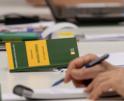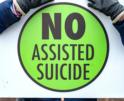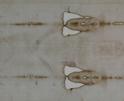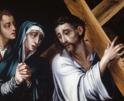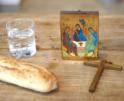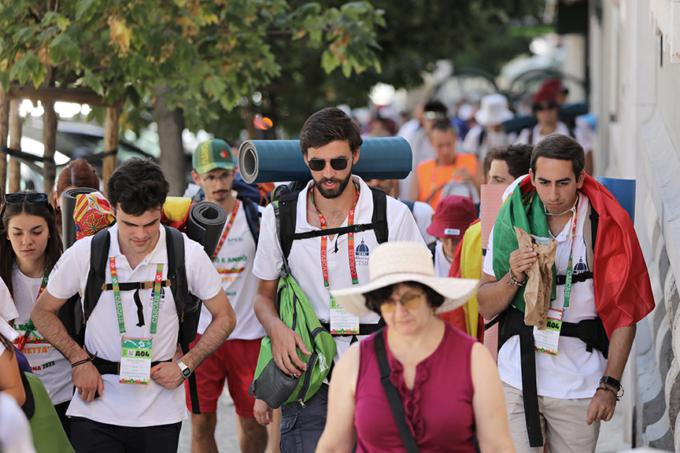
Spirituality
My formal discourse was on the true nature of freedom. In the presence of an eerily lifelike statue of John Paul II perched against the side wall, I told the crowd that authentic freedom is not doing what one pleases but instead the disciplining of desire so as to make the achievement of the good first possible and then effortless.
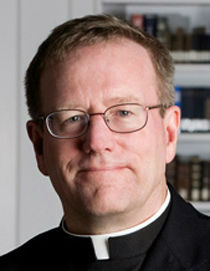
Barron
I've just returned from World Youth Day in Lisbon, my fourth experience of this unique gathering. I had attended the celebrations in Madrid (2011), Krakow (2016), and Panama (2019), but in many ways, this one was, for me, the most memorable.
First, a few general remarks. I believe that World Youth Day is one of Pope John Paul II's greatest gifts to the Catholic Church, its appeal continuing unabated some 40 years after it was launched. Though naysayers have consistently predicted, or even called for, its demise, this international confab of young Catholics shows no signs of running out of steam. As is always the case, this World Youth Day in Lisbon featured armies of kids from practically every nation on earth, simultaneously celebrating their nationalities and their common Catholic affiliation, effortlessly resolving the potential tension between those identities. And as always before, this one centered around the presence of the successor St. Peter, the visible sign of the Church's unity. Though Pope Francis is, by any measure, an old man, he, by virtue of his office and his personal charisma, drew young people to him like a magnet. By some estimates, a million and a half people showed up for the closing Mass.
I had the privilege of speaking on five separate occasions in Lisbon. My first engagement was with a huge crowd of young people from France. Because I had studied in Paris for my doctorate and hence had some facility in the language, the French bishops had asked me to address this group. When I arrived at the venue -- an expansive area near the Tagus River -- the French kids were dancing to and singing with a very energetic band onstage. Then, they were regaled by a video presentation from a very popular French footballer, who evidently lives his Catholic faith with enthusiasm. Judging from their boisterous reaction, I gathered that they were delighted that this sports hero was on their own spiritual team. Next, I came out, clutching my prepared text more than a little nervously since I hadn't spoken French in public for nearly 30 years. But the kids seemed able to tolerate my American accent. I spoke to them of their own marvelous spiritual heritage, expressed so richly in the great cathedrals of Amiens, Reims, Notre Dame de Paris, and Chartres, buildings that had sung so powerfully to me when I was a student in their country. And I urged them not to cave into the fashionable secularism of our age, an ideology that effectively kills the spirit.
My next talk took place the following day in a charming auditorium at the University of Lisbon. At the invitation of the Vatican Dicastery on Education and Culture, I had been asked to address a group of teachers, professors, and administrators on the topic of Catholic education. Taking my cues from St. Bonaventure and St. John Henry Newman, I argued that Christ the Logos must stand at the heart of the circle of university disciplines and that he does so noncompetitively, not compromising the integrity of the other subjects, but rather making them more luminous and beautiful. I was particularly moved by the eagerness and enthusiasm of the young scholars and aspiring teachers who listened to me that afternoon.
Then, that evening, I gave an extended homily at the Benediction service offered to over 12,000 young Americans who had assembled in a large park in the northern section of Lisbon. The weather was perfect, the mood was festive and yet prayerful, and when the Eucharist was brought forth, a very moving silence fell over the massive throng. I spoke to the young people about proclaiming the real Christ and not a watered-down simulacrum. When the real Jesus is declared, I said, hearts are set on fire. I concluded my remarks that night with the reminder that, though our culture is obsessed with safety, a religion that places before our eyes on a regular basis the image of a man nailed to a cross is not a religion that puts a high premium on safety! The Church is not interested so much in keeping us safe as preparing us for spiritual adventure and the embrace of our mission.
My fourth presentation was the next day at a gorgeous church in downtown Lisbon. Five hundred or so young people were packed into that space for one of the official dialogue-catecheses. This year, Pope Francis wanted the bishops not simply to speak to the youth but to enter into conversation with them. My formal discourse was on the true nature of freedom. In the presence of an eerily lifelike statue of John Paul II perched against the side wall, I told the crowd that authentic freedom is not doing what one pleases but instead the disciplining of desire so as to make the achievement of the good first possible and then effortless. As obvious examples, I laid out the process whereby one becomes a free speaker of a foreign language or a free player of the piano or a free golfer. In all of those cases, freedom is tantamount to the interiorization of the relevant disciplines, laws, and practices -- and most certainly not to mere liberty or license. I very much enjoyed the subsequent discussion I had with a panel of young people. Our topic was social media, and I was not altogether surprised to hear that their assessment was decidedly more negative than positive.
The fifth and final talk was a session with a large group of well over a thousand. At the Pope's request, this gathering was to be more contemplative than instructional. Thus, there was a Eucharistic procession and Benediction, and afterward, I spoke on the nature of prayer. I emphasized that prayer is best construed as a conversation between friends, involving both talking and listening, both words and silence. I made the practical recommendations that they should take up the rosary and the Jesus Prayer and should make a daily Holy Hour before the Blessed Sacrament a priority.
In the midst of my pilgrimage, I made a visit to the Shrine at Fatima, located about an hour and a half outside of Lisbon. I found it to be one of those curiously radioactive places -- like Lourdes, like Chartres, like Jerusalem -- a spot where heaven and earth seemed to meet. Particularly moving to me were the tombs of the two shepherd children -- Jacinta and Francisco -- that are located in the basilica, not far from the little grove of trees where the Mother of God spoke to them in 1917.
I will admit that the week was a tad grueling: lots of speeches, lots of walking, enormous crowds of people everywhere. But it was exhilarating as well, and full of grace.
- Bishop Robert Barron is the founder of the global ministry, Word on Fire, and is Bishop of the Diocese of Winona-Rochester.
Recent articles in the Spirituality section
-
No line-drawingMichael Pakaluk
-
Physician-assisted suicide is a slippery slopeCardinal Seán P. O’Malley
-
He saw the cloths and believedBishop Robert Barron
-
God's instrument for viewing the crucifixionMichael Pakaluk
-
QuinquagesimaMichael Pakaluk

